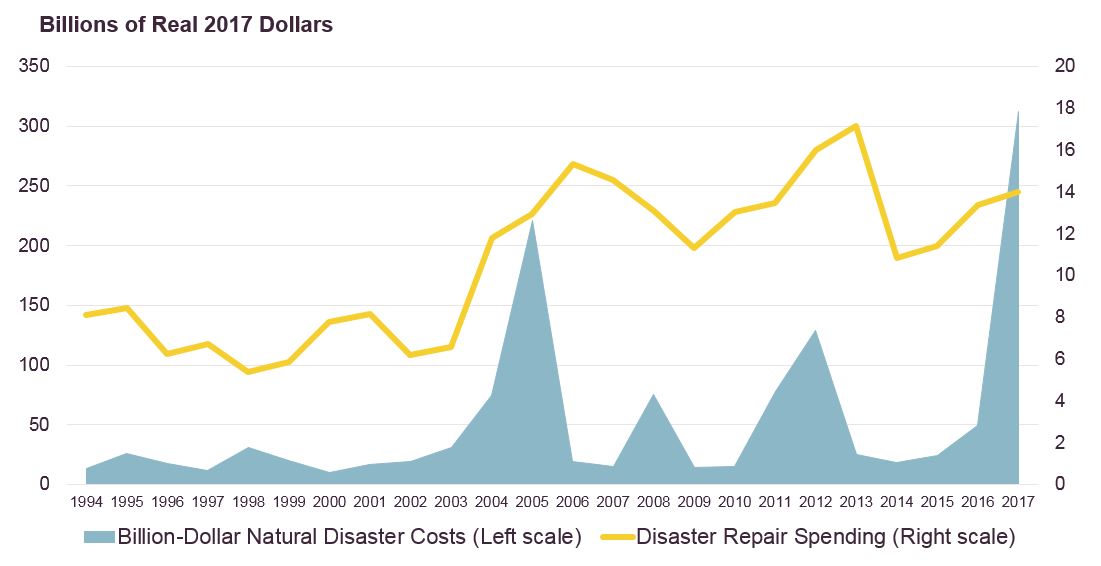How Much Will Homeowners Spend to Rebuild & Repair After Hurricane Florence?
Hurricane Florence was yet another reminder that natural disasters can inflict significant damage to the built environment. According to early projections, the storm affected over 250,000 homes in North and South Carolina and, once all the losses are reported, will cause about $20 billion in property damages.
The affected homeowners along the Carolina coast—like those in Houston affected by Hurricane Harvey, which was estimated to cause nearly $128 billion in damages—will be rebuilding and repairing their homes for years, long after the event itself has faded from the headlines. According to an analysis published by the Joint Center in November 2017, the costs from major natural disasters are associated with increases in disaster-related home-improvement spending for up to three years following the event, with remodeling activity typically peaking a year after the fact. Repair of rental properties can take even longer, according to a separate analysis of properties damaged by Hurricane Katrina.
Newly released data on homeowners’ spending from the American Housing Survey (AHS) and on the number and costs of large (over $1 billion) natural disasters from the National Oceanic and Atmospheric Administration (NOAA) allow us to update these estimates, permitting us to speculate about the timing and magnitude of homeowner spending in Florence’s wake.
According to NOAA, Hurricanes Harvey, Irma, and Maria combined with Northern California wildfires and other natural disasters to inflict an estimated $313 billion in damages, which made 2017 the costliest year on record for natural disasters (Figure 1). Even after adjusting for inflation, these losses were 42 percent higher than in 2005, when Hurricane Katrina caused much of the $221 billion in damages that year. Over 86 percent of natural disaster costs in 2017 resulted from the three tropical storms, but the total was bolstered by record-setting impacts from wildfires, which caused $18 billion in damages, as well as higher-than-usual impacts from other severe storms and flooding, which caused $17 billion and $3 billion in damages, respectively.
Figure 1: Losses from Natural Disasters Reached All-Time Highs in 2017 as Disaster-Related Improvement Spending Increased

Notes: Dollar values are adjusted for inflation using the CPI-U for all items. Natural disaster costs include only natural disasters that generate over $1 billion in damages after adjusting for inflation.
Sources: JCHS tabulations of US Housing and Urban Development, American Housing Survey and National Oceanic and Atmospheric Administration data.
According to our analysis, the damages from 2017’s disasters generated an increase in spending on disaster-related renovations. Specifically, last year homeowners spent $14 billion on disaster-related repairs, which was a 23 percent increase from the $11.4 billion spent in 2015 after adjusting for inflation, and 5 percent above the $13.4 billion spent in 2016.
However, significant increases in spending can be expected to occur this year and next. Looking at national trends, the spike in repair spending following Hurricane Katrina in 2005 didn’t occur until 2006, and the spike after Sandy in 2012 didn’t occur until 2013. According to our updated estimates, a $10 billion increase in natural disaster damages is associated with a $250 million dollar increase in spending on home improvements related to disasters over the following three years. Undoubtedly, Hurricane Florence will affect homeowners for the next several years, and likely the broader communities for far longer.

